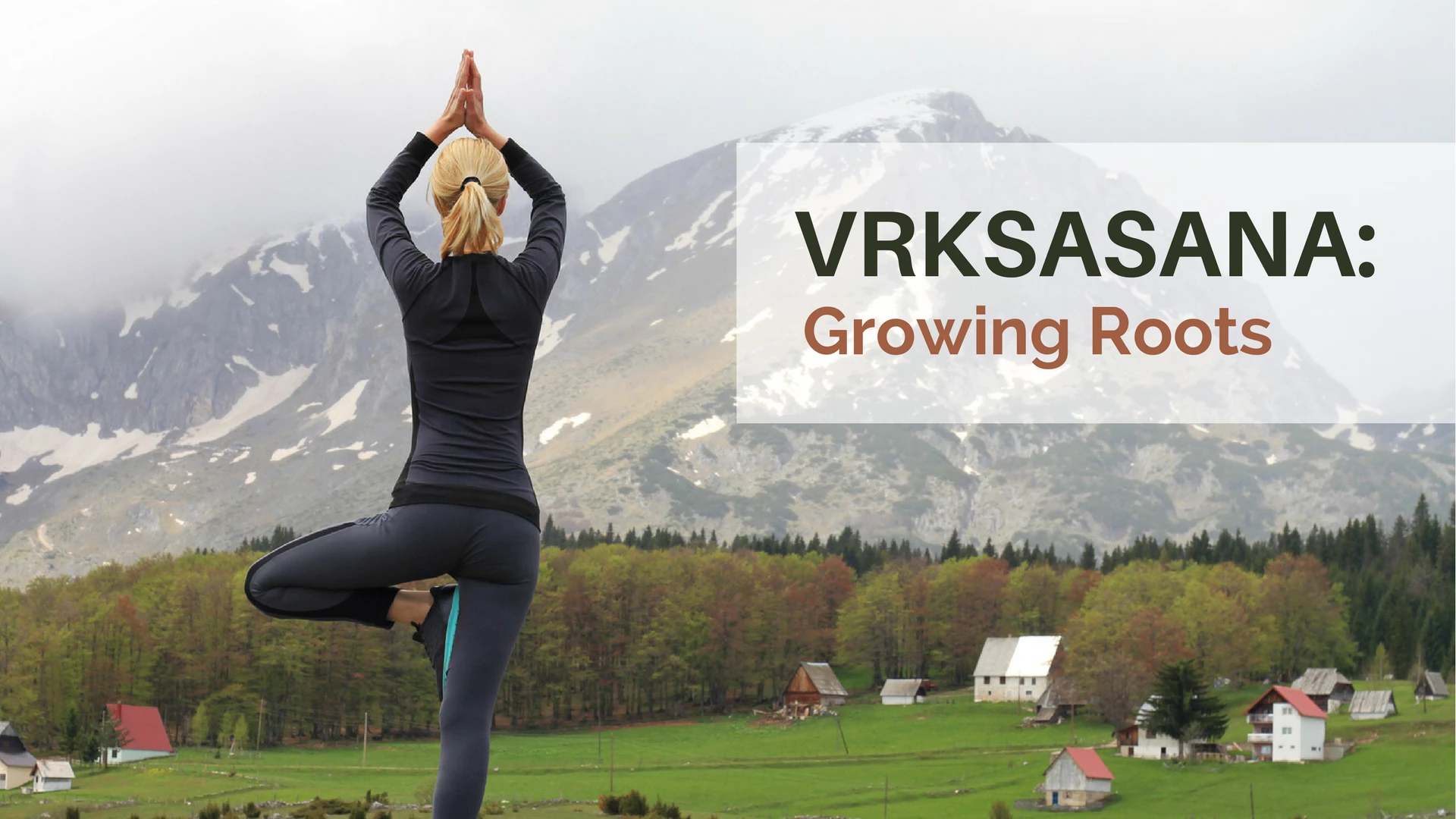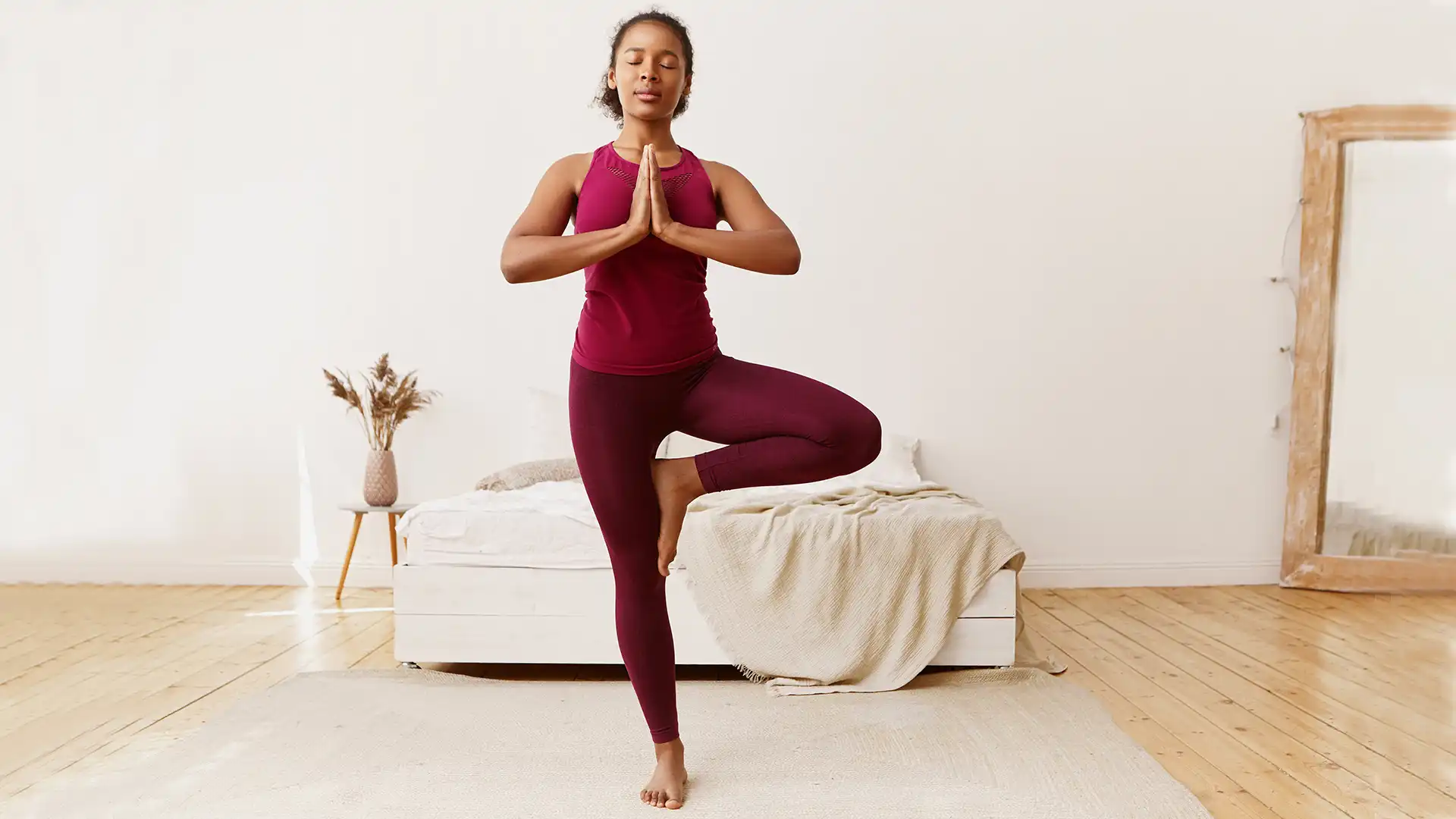Vrksasana (Tree Pose): Growing Roots

There’s a lot that can be learned from trees when it comes to approaching Vrksasana (Tree Pose). Trees are our partners in keeping this living, breathing planet alive. We inhale the oxygen that trees exhale, and they inhale the carbon dioxide we exhale. We are inextricably tied together.
Trees can also teach us about the importance of cultivating roots. While only the trunk, branches and leaves are usually visible to us, the roots of most trees are just as massive as what’s above ground. Knowing that this complex invisible root system is what keeps a tree upright can teach us about grounding our own bodies.
Vrksasana emulates the steady, rooted stance of a tree. When you practice this yoga pose, visualize your standing foot as the roots, your legs and torso as the trunk, your arms and upper leg as branches, and your head and hands as the leaves. When you fully plant your standing foot, energy rebounds up your trunk, nourishing your branches and leaves.
Active Yield: Setting Down Roots in Tree Pose
Grounding is most effective when you employ “active yield.” I first learned about active yield from Donna Farhi. It applies to literally everything we do. Here’s a brief explanation:
There are several ways of relating to gravity. Try this experiment:

- Collapsing: Stand on a nonskid mat in Tadasana (Mountain Pose) (a neutral standing position) with your feet hips-width apart. Now slump your shoulders and make your body heavy, collapsing your weight into your feet. Note how you’re breathing. Return to Mountain Pose.
- Propping: From Mountain Pose, pull your muscles into your bones and try to push the floor away with your feet. Lift up through your upper body. Pull in your rear and suck in your gut. Now, try to breathe. Return to Mountain Pose.
- Active Yield: From Mountain Pose, bend your knees a bit and yield your weight to the ground. Press your feet into the floor as if you’re sending roots down into the ground. This is the same movement you make when you’re preparing to jump—pushing into the floor to lift the body up off the floor. Try it, but don’t let your body leave the ground. Do you feel an upward rebound through the rest of the body? This is active yield.
How to Set Down Roots in Vrksasana
- Stand in Mountain Pose (Tadasana) on a nonskid yoga mat. Close your eyes and feel how your feet are contacting the floor. Yield your weight into your feet and then root them into the floor.
- Shift your weight fully onto your right foot.
- Root your right foot as you bend your left knee and place your left foot into either the right inner thigh or the right calf. Avoid pressing your left heel into your right knee.
- Your left knee does not have to extend straight out to the side. In fact, this probably isn’t anatomically possible for most people because of the angle of most hip sockets. Let your knee angle forward slightly even as you extend it out from your hip.
- Place your hands in Anjali Mudra (Prayer Position).
- Continue to root your right foot as you breathe and relax.
- If your balance feels steady, ground your right foot as you raise your arms up toward the sky.
- If your balance feels shaky, place your right heel into your left ankle with a few toes touching the floor. Remember that practicing balancing poses helps you develop the skill of balancing. If practicing with a couple of toes on the floor challenges your balance but allows you to feel the steadiness of rooting, the pose is helping you develop the skill.
- Stay here, breathing deeply and planting your feet for 5 to 10 breaths.
- Return to Mountain Pose. Take a few deep breaths, feeling your legs.
- Repeat on your other side.
Tree Pose Benefits: Balancing

In general, balancing poses not only teach our bodies how to maintain balance but also cultivate concentration. Balancing poses, such as Vrksasana, are a great way to center yourself at the start of your yoga practice. You can also use them to collect your mind when you notice that your mind is scattered.
The more you practice balancing, the more you will notice how your body’s ability to balance changes daily. As you practice, make adjustments, standing close to a wall if need be so that you work with your body instead of trying to force it to practice some idealized version of the yoga pose.
Vrksasana can help you start your morning with a collected mind or calm you at the end of a stressful day. Practice firmly planting your roots so your trunk, branches, and leaves can bloom.
Also, read...
4 Ways to Practice Locust Pose
5 Keys to Healthy Neck Alignment in Cobra Pose (Bhujangasana)
Uttanasana: Expand Your Breath
Related courses
Breath as Medicine: Yogic Breathing for Vital Aging
Yoga and Myofascial Release: Releasing Chronic Tension with the Bodymind Ballwork Method

Charlotte Bell began practicing yoga in 1982 and began teaching in 1986. She was certified by B.K.S. Iyengar in 1989 following a trip to Pune. In 1986, she began practicing Insight Meditation with her mentors Pujari and Abhilasha Keays. Her asana classes blend mindfulness with physical movement. Charlotte writes a column for Catalyst Magazine and serves as editor for Yoga U Online. She is the author of two books: Mindful Yoga, Mindful Life, and Yoga for Meditators, both published by Rodmell Press. She also edits Hugger Mugger Yoga Products’ blog and is a founding board member for GreenTREE Yoga, a non-profit that brings yoga to underserved populations. A lifelong musician, she plays oboe and English horn in the Salt Lake Symphony and the folk sextet Red Rock Rondo whose 2010 PBS music special won two Emmys.



